



















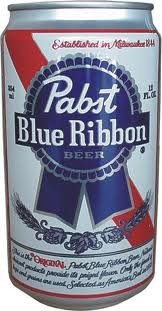
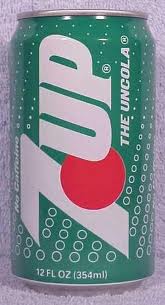
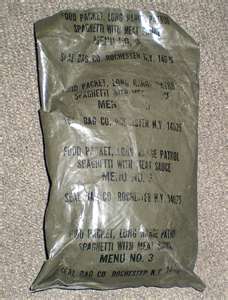
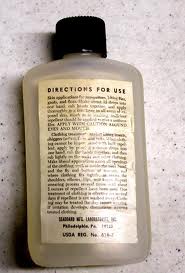
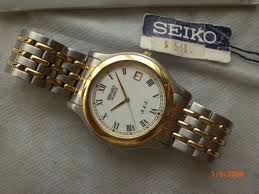
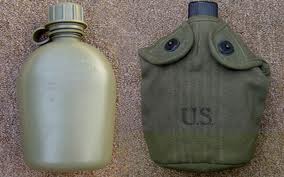
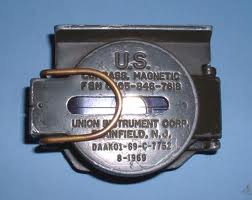
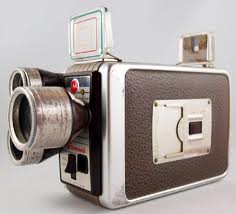
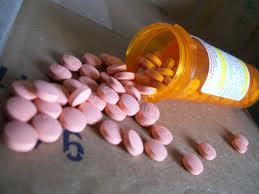
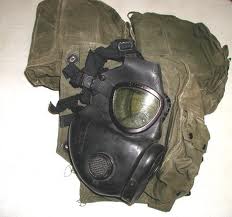
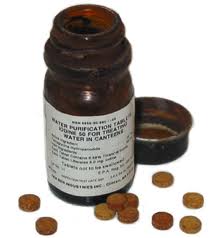
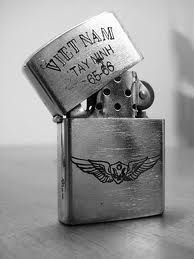
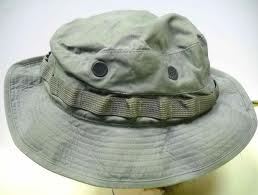

C-Rations (coined in WWII, were actually MCI's, Meal Combat Individual)
Who could forget them? Remember what came in a box? Did you have a favorite "dinner"?
The "M" unit came in 12 basic varieties grouped in 3 menus of 4 different entrees (later supplemented by "Alternate" variant entrees):
M-1: Beefsteak, Chicken or Turkey Loaf, Chopped Ham & Eggs, or Ham Slices
(Cooked in Juices or Fried). M-1A: Tuna Fish.
M-2: Meat Chunks w/. Beans in Tomato Sauce, Ham & Lima Beans,
Beef Slices w/. Potatoes in Gravy, or Beans w/. Frankfurter Chunks in Tomato Sauce.
M-2A: Spaghetti w/. Meatballs in Tomato Sauce.
M-3: Beef in Spiced Sauce, Boned Chicken or Turkey, Chicken w/. Noodles in
Broth, or Pork Steak Cooked in Juices. M-3A: Meat Loaf.
The "B" unit came in three different varieties:
B-1: 7 Crackers and 2 Chocolate Discs (Types: Solid Chocolate, Chocolate Creme,
or Chocolate Coconut).
Peanut Butter Spread.
B-2: 4 Hardtack Biscuits (often referred to by troops as "John Wayne cookies") and a cookie sandwich or fudge disc.
Cheese Spread (Types: Processed Cheese w/. Pimentos, or Processed Cheese w/. Caraway Seeds). Spread Alternate: Plain Cheddar Cheese.
B-3: 4 Cookies and a packet of Cocoa powder.
Jam Spread (Types: Apple, Mixed Berry, Seedless Blackberry, Mixed Fruit, Grape, or
Strawberry) .
The "D" unit came in three different types:
D-1 (Fruit): Halved Apricots, Sliced Peaches, Quartered Pears, Fruit Cocktail.
D-1A (Fruit): Applesauce.
D-2 (Cake): Pound Cake, Fruitcake, Cinnamon Nut Roll.
D-2A (Cake): Date Pudding and Orange Nut Roll.
D-3 (Bread): White Bread. (There were no alternates).
Each menu was grouped by their unit number (i.e., M-1, B-1 and D-1 items were grouped together). As an example, the jam in the B-3 unit was meant to be spread on the White Bread in the D-3 unit. Alternate items (designated with an "A" suffix) were introduced to provide variety and reduce the monotony. For variety, the M-1 and M-3 units (since they both used small cans) were often switched.
The "B"-unit's Crackers & Candy can was lined with a piece of corrugated cardboard to protect the contents from damage. In the "D"-unit, the white bread came in one solid cylindrical piece wrapped in wax paper, while the pound cake, fruitcake, Orange Nut Roll, and Cinnamon Roll came wrapped in paper wrappers like cupcakes.
The Accessory Pack came with salt, pepper, sugar, instant coffee, non-dairy creamer, 2 pieces of candy-coated chewing gum, a packet of toilet paper, a 4-pack of commercial-grade cigarettes, and a book of 20 cardboard moisture-proof matches.
Typical commercial brands issued in the cigarette ration were: Camel, Chesterfield, Kent, Kool, Lucky Strike, Marlboro, Pall Mall, Salem, or Winston. Due to health concerns, cigarettes were eliminated from the accessory packs in 1975
Who could forget them? Remember what came in a box? Did you have a favorite "dinner"?
The "M" unit came in 12 basic varieties grouped in 3 menus of 4 different entrees (later supplemented by "Alternate" variant entrees):
M-1: Beefsteak, Chicken or Turkey Loaf, Chopped Ham & Eggs, or Ham Slices
(Cooked in Juices or Fried). M-1A: Tuna Fish.
M-2: Meat Chunks w/. Beans in Tomato Sauce, Ham & Lima Beans,
Beef Slices w/. Potatoes in Gravy, or Beans w/. Frankfurter Chunks in Tomato Sauce.
M-2A: Spaghetti w/. Meatballs in Tomato Sauce.
M-3: Beef in Spiced Sauce, Boned Chicken or Turkey, Chicken w/. Noodles in
Broth, or Pork Steak Cooked in Juices. M-3A: Meat Loaf.
The "B" unit came in three different varieties:
B-1: 7 Crackers and 2 Chocolate Discs (Types: Solid Chocolate, Chocolate Creme,
or Chocolate Coconut).
Peanut Butter Spread.
B-2: 4 Hardtack Biscuits (often referred to by troops as "John Wayne cookies") and a cookie sandwich or fudge disc.
Cheese Spread (Types: Processed Cheese w/. Pimentos, or Processed Cheese w/. Caraway Seeds). Spread Alternate: Plain Cheddar Cheese.
B-3: 4 Cookies and a packet of Cocoa powder.
Jam Spread (Types: Apple, Mixed Berry, Seedless Blackberry, Mixed Fruit, Grape, or
Strawberry) .
The "D" unit came in three different types:
D-1 (Fruit): Halved Apricots, Sliced Peaches, Quartered Pears, Fruit Cocktail.
D-1A (Fruit): Applesauce.
D-2 (Cake): Pound Cake, Fruitcake, Cinnamon Nut Roll.
D-2A (Cake): Date Pudding and Orange Nut Roll.
D-3 (Bread): White Bread. (There were no alternates).
Each menu was grouped by their unit number (i.e., M-1, B-1 and D-1 items were grouped together). As an example, the jam in the B-3 unit was meant to be spread on the White Bread in the D-3 unit. Alternate items (designated with an "A" suffix) were introduced to provide variety and reduce the monotony. For variety, the M-1 and M-3 units (since they both used small cans) were often switched.
The "B"-unit's Crackers & Candy can was lined with a piece of corrugated cardboard to protect the contents from damage. In the "D"-unit, the white bread came in one solid cylindrical piece wrapped in wax paper, while the pound cake, fruitcake, Orange Nut Roll, and Cinnamon Roll came wrapped in paper wrappers like cupcakes.
The Accessory Pack came with salt, pepper, sugar, instant coffee, non-dairy creamer, 2 pieces of candy-coated chewing gum, a packet of toilet paper, a 4-pack of commercial-grade cigarettes, and a book of 20 cardboard moisture-proof matches.
Typical commercial brands issued in the cigarette ration were: Camel, Chesterfield, Kent, Kool, Lucky Strike, Marlboro, Pall Mall, Salem, or Winston. Due to health concerns, cigarettes were eliminated from the accessory packs in 1975
Field Drink Rations
When I first got to Nam and when we were out in the field, the choppers would bring in the nite kit (concertina wire, claymores, etc. Along with the defensive supplies came our dinners in Mermac containers, like large thermos boxes with lids. In addition, we would get a ration of drinks, i.e. beer and soda. After awhile, the Army stopped flying out beer. I could never drink hot beer anyway.
When I first got to Nam and when we were out in the field, the choppers would bring in the nite kit (concertina wire, claymores, etc. Along with the defensive supplies came our dinners in Mermac containers, like large thermos boxes with lids. In addition, we would get a ration of drinks, i.e. beer and soda. After awhile, the Army stopped flying out beer. I could never drink hot beer anyway.
LRP Rations - freeze dried meals
This was good stuff if you could find it. Usually when we crossed paths with the RECON guys, and they were coming in from patrol, they were willing to unload some of these meals. Cut open the pack and add water, lots and lots and lots of water. The problem was having enough water to eat AND drink. Entrees included: Menu #1: Beef Hash, Menu #2: Chili con Carne, Menu #3: Spaghetti with Meat Sauce, Menu #4: Beef with Rice, Menu #5: Chicken Stew, Menu #6: Pork with Scalloped Potatoes,Menu #7: Beef Stew, and Menu #8: Chicken with Rice. The dessert unit included one of the following : a Cereal Bar, a Fruitcake Bar, Chocolate Disc, Fudge Disc, a packet of individually-wrapped pieces of candy (Brachs caramels or Charms hard candies), or even freeze-dried fruit (pears, peaches, or apricots) in the late-war issue rations.
This was good stuff if you could find it. Usually when we crossed paths with the RECON guys, and they were coming in from patrol, they were willing to unload some of these meals. Cut open the pack and add water, lots and lots and lots of water. The problem was having enough water to eat AND drink. Entrees included: Menu #1: Beef Hash, Menu #2: Chili con Carne, Menu #3: Spaghetti with Meat Sauce, Menu #4: Beef with Rice, Menu #5: Chicken Stew, Menu #6: Pork with Scalloped Potatoes,Menu #7: Beef Stew, and Menu #8: Chicken with Rice. The dessert unit included one of the following : a Cereal Bar, a Fruitcake Bar, Chocolate Disc, Fudge Disc, a packet of individually-wrapped pieces of candy (Brachs caramels or Charms hard candies), or even freeze-dried fruit (pears, peaches, or apricots) in the late-war issue rations.
Bush Hat vs Steel Pot
Most everyone I know keep their steel pots on when operating in the field except for the "bad boys", special ops, LRP's, RECON, etc, who seemed to feel traveling light made more sense. Around base camp or in a fire support base, shedding the "pot" for lighter head gear seemed to be the norm.
Most everyone I know keep their steel pots on when operating in the field except for the "bad boys", special ops, LRP's, RECON, etc, who seemed to feel traveling light made more sense. Around base camp or in a fire support base, shedding the "pot" for lighter head gear seemed to be the norm.
Insect Repellent, also known as Bug Juice
The stand issue for smearing yourself with insect protectant, but personnally I never liked using the stuff due to the smell, and the greasy feeling it left on your skin. It made your skin look shiny at night and it made you sweat more. But it was great for removing leeches from the skin. You see lots of photos with guys sticking a bottle of this stuff in their steel pot head cover band.
The stand issue for smearing yourself with insect protectant, but personnally I never liked using the stuff due to the smell, and the greasy feeling it left on your skin. It made your skin look shiny at night and it made you sweat more. But it was great for removing leeches from the skin. You see lots of photos with guys sticking a bottle of this stuff in their steel pot head cover band.
Plastic Canteen and Cover
How many canteens did you carry in the field. When I first arrived in March, I was packing 3 or 4 of these and still couldn't drink enough water. By the time I left, I was down to using just 1.
How many canteens did you carry in the field. When I first arrived in March, I was packing 3 or 4 of these and still couldn't drink enough water. By the time I left, I was down to using just 1.
Halzone Tablets or Iodine Tablets
"Don't drink the water unless you treat it". How many times did we hear that one. Even the 'treated water" that was brought in with Chinooks in water trailers seemed to give you the two step trots. I swear it was two months before I could walk by the "shitter" without having to occupy one of the "drop zones". Anyone getting water from another source had to use Halzone tablets or Iodine tablets to purify the water for consumption and this stuff made it task like medicine.
"Don't drink the water unless you treat it". How many times did we hear that one. Even the 'treated water" that was brought in with Chinooks in water trailers seemed to give you the two step trots. I swear it was two months before I could walk by the "shitter" without having to occupy one of the "drop zones". Anyone getting water from another source had to use Halzone tablets or Iodine tablets to purify the water for consumption and this stuff made it task like medicine.


Malaria Pills - Quinine
One of Doc's duties, was to make sure everyone took their pills. Remember, the white pills and the little orange pill we had to take to keep us from getting Malaria? The area around Dau Tieng has a different type of mesquito than other regions and therefore requires another variety of drug for protection.
One of Doc's duties, was to make sure everyone took their pills. Remember, the white pills and the little orange pill we had to take to keep us from getting Malaria? The area around Dau Tieng has a different type of mesquito than other regions and therefore requires another variety of drug for protection.

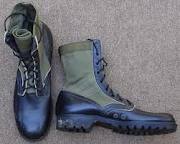


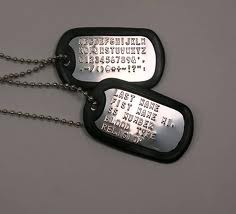

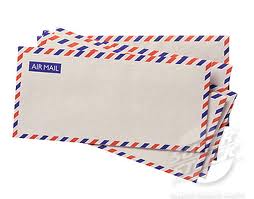
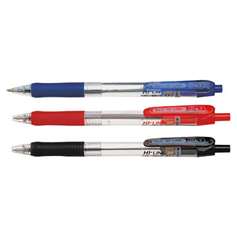








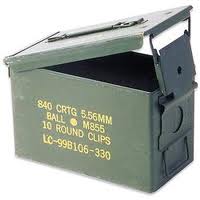


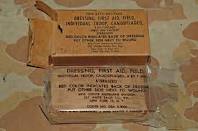
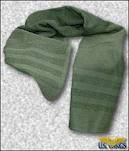




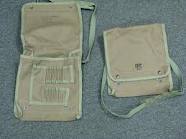






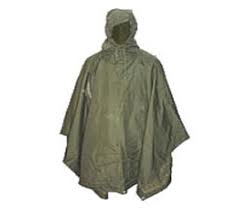
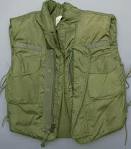






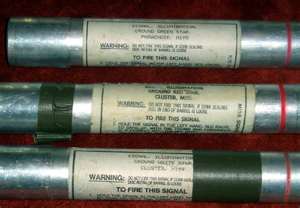
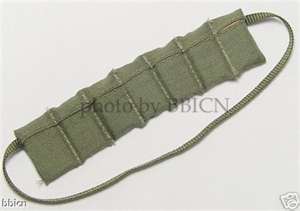

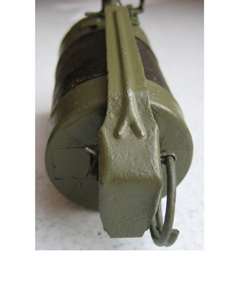


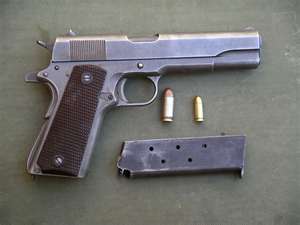
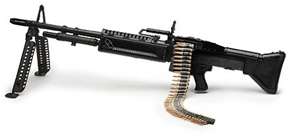
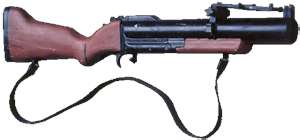
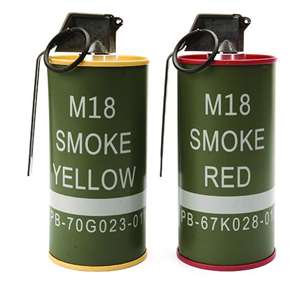
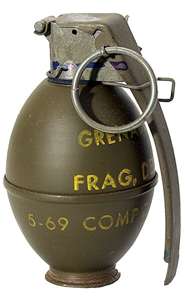



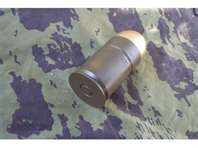
Compass
I realize not everyone carried one of these, but it you were on point or were a NCO, officer or maybe the attached FO, you better know where you were going if that mission was to be completed or if you ever needed to call for assistance. Finding the checkpoints was mission critical and the better at using this instrument the safer eveyone was.
I realize not everyone carried one of these, but it you were on point or were a NCO, officer or maybe the attached FO, you better know where you were going if that mission was to be completed or if you ever needed to call for assistance. Finding the checkpoints was mission critical and the better at using this instrument the safer eveyone was.
Gas Mask
I swore I dragged this piece of gear all over III Corp and NEVER, NEVER even put it on. The only one using CS gas or any gas for that matter, was us that I know of. I can still remember using one in basic training when we were herded into that building and told to take our masks off and get a whiff of CS gas. Not on any of my highlight memories.
I swore I dragged this piece of gear all over III Corp and NEVER, NEVER even put it on. The only one using CS gas or any gas for that matter, was us that I know of. I can still remember using one in basic training when we were herded into that building and told to take our masks off and get a whiff of CS gas. Not on any of my highlight memories.
Knife
This was not an everyday instrument that everyone used or had access to. I remember that I started to carry one after I became a NCO. Although the M16 was equipped to handle a bayonet, I don't recall if every GI had been issued one.
This was not an everyday instrument that everyone used or had access to. I remember that I started to carry one after I became a NCO. Although the M16 was equipped to handle a bayonet, I don't recall if every GI had been issued one.
Zippo Lighter
Who didn't smoke at this point in our lives. It relieved the tension and kept our hands busy. Most of us who had a lighter in our pockets had some form of engraving on it. Standard issue is how I saw it. I still have mine, engraved with a map of Vietnam on one side and "25th Infantry Division Cu Chi" on the other.
Who didn't smoke at this point in our lives. It relieved the tension and kept our hands busy. Most of us who had a lighter in our pockets had some form of engraving on it. Standard issue is how I saw it. I still have mine, engraved with a map of Vietnam on one side and "25th Infantry Division Cu Chi" on the other.
Cameras
Sooner or later, everyone had their hands on a camera. At first it was easy to get film developed in Dau Tieng or Cu Chi if someone was able to make a run back to base camp. What is surprising to me, is some guys actually were doing photo ops in the field during combat and even with a 8MM camera. What memories pictures bring back.
Sooner or later, everyone had their hands on a camera. At first it was easy to get film developed in Dau Tieng or Cu Chi if someone was able to make a run back to base camp. What is surprising to me, is some guys actually were doing photo ops in the field during combat and even with a 8MM camera. What memories pictures bring back.
Jungle Books
Thank goodness a piece of gear that actually delivered when used. These boots pumped water out of two vent holes on the inside. Light on the feet to wear and they dried out fast if given a chance. We all remember how the monsoon season was to us. Wet feet meant bad news: blisters, chaffed feet or if you did not watch it, Jungle Rot.
Thank goodness a piece of gear that actually delivered when used. These boots pumped water out of two vent holes on the inside. Light on the feet to wear and they dried out fast if given a chance. We all remember how the monsoon season was to us. Wet feet meant bad news: blisters, chaffed feet or if you did not watch it, Jungle Rot.
Watches
Watches were important to everyone. Change of watch; needing to be somewhere on time; how long has something been going on. I went through several watches. Some just stopped working, most likely from being wet. One went down to shrapnel. But you could buy a watch from any kid on a bike. And what was THE brand to own: SEIKO. Maybe it said SEIKO on the face, but probably had some junk brank on the inside.
Watches were important to everyone. Change of watch; needing to be somewhere on time; how long has something been going on. I went through several watches. Some just stopped working, most likely from being wet. One went down to shrapnel. But you could buy a watch from any kid on a bike. And what was THE brand to own: SEIKO. Maybe it said SEIKO on the face, but probably had some junk brank on the inside.
"Do you remember or realize all the stuff we dragged around in the field or used daily? This is a list of items I remember using throughout my tour and I am sure you did as well." - Sarge
Dog Tags and our faith on display
Everyone had their GI issue dog tags. Not everyone had religion or believed in a higher power. For some this changed as the war went on and we realized how mortal we all were. Faith for many was a comfort in trying and desperate times. I wore a cross during my tour and my Guardian Angel was right by my side working overtime.
Everyone had their GI issue dog tags. Not everyone had religion or believed in a higher power. For some this changed as the war went on and we realized how mortal we all were. Faith for many was a comfort in trying and desperate times. I wore a cross during my tour and my Guardian Angel was right by my side working overtime.
Writing materials
The best thing about writing letters to home, was getting mail back.Everyone's disposition improved when you heard those words - "MAIL CALL". Letters were both good and bad. Good news from home was always welcome, but the " Dear John" letter?
The best thing about writing letters to home, was getting mail back.Everyone's disposition improved when you heard those words - "MAIL CALL". Letters were both good and bad. Good news from home was always welcome, but the " Dear John" letter?
Holy Bible or other religious books
Seeing the Chaplain was always a nice distraction and for some of us a chance to profess our faith in the middle of chaos. The Chaplains were willing to serve all faiths and always there to listen and always took the time to offer Holy Communion. Some guys even had those small pocket Bibles. Our Plt Sgt, Sgt Partee, seemed to always have his Bible in hand.
Seeing the Chaplain was always a nice distraction and for some of us a chance to profess our faith in the middle of chaos. The Chaplains were willing to serve all faiths and always there to listen and always took the time to offer Holy Communion. Some guys even had those small pocket Bibles. Our Plt Sgt, Sgt Partee, seemed to always have his Bible in hand.
Poncho and Liner
I never wore my poncho; too much reflection in the rain or in lightning storms. The liner I used but it was easy to sweat lying on it. The best usage of the poncho was for making temporary shelters from the rain during the monsoons. The laager sites we had in Hoc Mon in July to September had our sleeping areas built using ponchos to get us out of the perennial rain.
I never wore my poncho; too much reflection in the rain or in lightning storms. The liner I used but it was easy to sweat lying on it. The best usage of the poncho was for making temporary shelters from the rain during the monsoons. The laager sites we had in Hoc Mon in July to September had our sleeping areas built using ponchos to get us out of the perennial rain.
Ammo Can
The ultimate story locker for our prized possessions. Letters from home; our writing materials, maybe jewelry or a camera or radio.
The ultimate story locker for our prized possessions. Letters from home; our writing materials, maybe jewelry or a camera or radio.
First Aid Kit
One of the first items we made sure we had and the last item we wanted to use. Everyone had one of these somewhere attached to their utility belt or harness.
LSA (gun oil) and gun cleaning fluid
The M60 gunners always had a bottle of LSA with them to try and cool down a hot barrel. For the rest of us, a clean weapon was more important than any other activity we attended to. It meant our lives if we had a misfire.
Towel O.D. Green
After first arriving in country and as I began to hump the jungle with my platoon, I quickly discover the cooling effect of keeping a wet towel around my neck. I later abandoned this concept, but we all need a towel at some point for personnel hygiene.
C4 (white) Plastic Explosive
Required both heat and shock to set it off. I attended Demolition School and learned all about making fuses and crimping blasting caps and using Detonation cord (det cord). Most of us didn't get the chance to blow up things but all of us ended up using C4 like Sterno to cook our meals. A small chunk the size of a wad of gum, a match and instant stove. There was also a green plastic explosive that was thin, about 3/8"X3"X10" thick as opposed to a bar of C4 which was about 1"X2"X10". I never used the green stuff.
Maps and cases
I used a lot of maps during my tour, but do not recall how I took care of them. I can't remember if I just stuffed them in my fatigue shirt, or how I carried them. I'm sure I had to handle them somehow. Since they were plastic coated they were ideal to be used over and over and were marked up using a grease pencil.
Radios
On one could survive without listening to music from the Armed Forces Radio Network in the "world". Batteries were hard to come by so in an emergency, we could wire up a PRC25 battery to the radio and keep the music flowing. Many, many of my memories are tied to what music was playing during my tour.
Flashlights
Usually carried by the officers and some NCO's for use during nighttime operations to read maps. These were equipped with changable lenses, clear or red and had a lanyard attached. Light of any kind was avoided at all costs otherwise it attracted attention in the form of enemy mortars and other hazards.
Flak Jackets
The mech boys were large fans of this jacket along with door gunners. But for the infantry, those of us slogging along through the brush, it was a sweat box to wear. The battalion at one time ordered everyone to wear these things, but within a few weeks, I shed mine and was glad to look the bulk and the weight.
Flares
We had two types of small flares. The star cluster used for signaling was not good for illuminations at night but was important to alert pilots of our location. The other, the M49 trip flare was vital for providing advanced notice of the approaching enemy. Set up with a trip wire, around ambush sites or night laager sites, they provided ample illumination to target the enemy. On a night operation I was setting up a trip flare and somehow I managed to trigger it when I was still holding it. It gave me 2nd degree burns to my left hand and I can still see the scars today. Fortunately my blunder did not lead to any reaction from Charlie. It was scary knowing I couldn't hide anywhere with that flare burning only feet from me.
Ammunition
You know the drill. If you carried a M16, 2 seven magazine bandoliers plus one in the gun was a standard load. For the Grenadier and his M79, 40 rounds packed into a used Claymore mine bag. And for the M60 gunner, 200 rounds plus a sidearm, usually a Colt .45.
Issued Weapon
M-79 Grenade Launcher
M-60 Machine Gun
Colt .45
M-16 of various makeups
Grenades
Frag grenades (killing radius of 5 meters), everyone usually carried 2-4 of these and a smoke grenade for signalling close in air support, medevacs or eagle flight pickups. I had to pack a WP (white phrosphrous) used mostly for signaling. When one of these was tossed, you had to get more than 15 meters from it when it exploded otherwise, you would be showered with white hot burning metal.
Issued Weapon
M-79 Grenade Launcher
M-60 Machine Gun
Colt .45
M-16 of various makeups
M18 Claymore Mine
Just one word to describe this device. Nasty!. Only carried when we were on night ambushes or they were part of the "night kit" ferried out via Chinooks to night defensive positions. I had the unpleasant experience of being on a ambush patrol around Hoc Mon in July. We had lost our pace count and tried to set up our ambush in the wrong location. We were spotted by another AP from Alpha Company and they set up a hasty ambush upon which we stumbled into. They lite us up with the Claymores, their 60's and 16's. Fortunately, except for McGeath, we only had one fatality. My PRC-25 radio had the antenna shot in two.
Run "mouse" over picture to find names


P-38 also know as the "US ARMY POCKET CAN OPENER" and "OPENER, CAN, HAND, FOLDING, TYPE I".
Who could forget this old friend. Without it, eating would be difficult in the field. I'm willing to bet most of us still has one of these old dependable openers at home.

Click on the star of your choice to vote!

M1943 GI Shovel
Saw these things laying around and on the backs of the 101st ABN, but I never can recall actually using one. Somehow we managed to get the standard "adult" issued picks and shovels to do our digging. Maybe some of you had them in your possession?
Saw these things laying around and on the backs of the 101st ABN, but I never can recall actually using one. Somehow we managed to get the standard "adult" issued picks and shovels to do our digging. Maybe some of you had them in your possession?
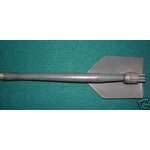

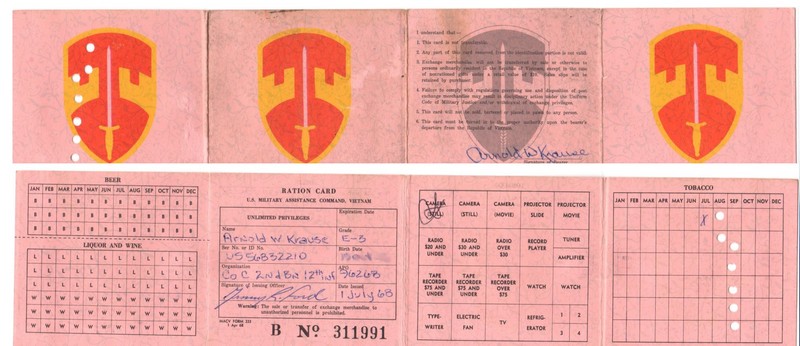
MACV Ration Card - Good at the PX

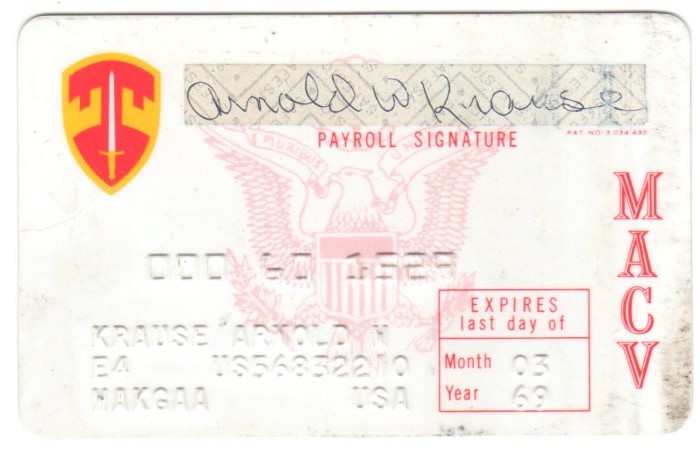
MACV Currency Control Plate
You needed one of these to exchange or convert U.S. Dollars, buy money orders, make cash deposits, get treasury checks, military payment orders, and banking paper. I was always sending money home to my parents to make my car payments while I was overseas.
You needed one of these to exchange or convert U.S. Dollars, buy money orders, make cash deposits, get treasury checks, military payment orders, and banking paper. I was always sending money home to my parents to make my car payments while I was overseas.





